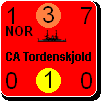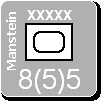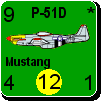Shannon V. OKeets
Posts: 22095
Joined: 5/19/2005
From: Honolulu, Hawaii
Status: offline

|
Here is my first pass at the design document for the tutorials. I think you will see why it took me a couple of weeks to organzie the suggestions that were made.
===========================
Tutorial Design
(as of February 6, 2006)
I Tutorial Design Overview
An absolutely complete set of tutorials would take the player through the entire rule book, explaining every section in detail with maps and units. It would include all the optional rules and give examples of tactics, operations in a theater of war, and strategy. While that might be a good and noble thing to do, it is clearly impractical for MWIF.
Some items will have to be cut from the complete list. Part of the pleasure of playing WIF is learning the different tactical, operational, a strategic possibilities and trying them out. This will be even easier to do given an AI opponent to play against. Therefore, those aspects of the game will be primarily left to the written text and not part of the tutorial system.
Instead, the tutorials will focus primarily on teaching the players two things: (1) WIF rules as coded in MWIF, and (2) the MWIF user interface. The joke here is that I consider the following lists to be incomplete.
II Structure
Number
Working on the principle that you can’t have too many tutorials, there will be multiple, with each one focused on one or more aspect of game play. The tutorials will be designed to be accessible whenever a player likes, so he can review them while playing a game. Many tutorials will start with a game in progress, so this may require having the program automatically exit the player’s current game and return to it after the player reviews a tutorial or two.
The overall structure will be to provide many tutorials that are short in length, with each tutorial assuming some level of knowledge on the part of the player. Some of them will be introductory, while others will be for players who have mastered the basics. Besides being accessible individually, the tutorials will also be linked so the player can go through them in a series that provides an increasing amount of knowledge on a broad topic. Therefore, there will be a land combat tutorial (e.g., Barbarossa), a naval combat one (e.g., Guadalcanal), and one that includes the use of the production system.
Size
After the introductory tutorials, the next set of tutorials will be quite small, starting with perhaps as few as 3 to 5 units, and slowly enlarging in scope. For these tutorials, the September/October 1939 Polish campaign will be used. If possible, some decision making will be automated so the 'lesson' will be easier for the player to understand. In each case, the tutorial will have a simple task for the player to accomplish. Ideally, they will also include enough feedback on the player’s decisions that he can easily evaluate his own performance. Similar, very simple, examples will be created for each type of naval combat (naval air, surface, submarine) and air combat (air-to-air, strategic bombing, ground strike, anti-air). Some of the tutorials will cover one impulse, step for step. By linking a predetermined series of these the tutorials will demonstrate to the player what constitutes a single game turn. Each impulse in the turn will be progressively more complex.
Scenarios
The smallest scenario used in the tutorials will be the 1939 invasion of Poland, and the larger ones will be the Barbarossa and Guadalcanal scenarios. In the case of the latter two, the player will have the option of playing out the scenario from the point that the tutorial ends.
Watching
Some of the tutorials will simply have the player watch a previously played game. An additional information box/form on the screen will describe what is being done (keystrokes, mouse moves), why it is being done (tactics, strategy), and give the player some control over what is on screen. He will be able to direct the tutorial to change the speed of the presentation, skip over sections (fast forward), or return to an earlier point (rewind). This might include a small movie of play mechanics
Examine and Explore
In the Introductory Tutorials, the player will mostly examine, looking at the map and different unit types. He will be able to click on a unit and get a description of its capabilities, learn about its advantages and disadvantages. During the first Scenario Tutorial, he will be able to move units around on the map and see what their limits are, including the effects of terrain and other constraints on movement.
Feedback
Providing the player with feedback on his actions will be used often. In some cases this will be as simple as having the player press a key or click on an item and having the program respond. This will be used extensively when teaching the player the game interface system. At other times simple questions will be asked such as: “Which of the enemy stacks is the weakest?”, “What units would be best to use in attacking it?”, and “Is it better to choose the Blitz table or the Assault table?”. These questions will all be on very basic game concepts, not places where understanding the complexities of the game are required.
The intent is to enable the player to assess his own understanding of what is being taught, without requiring him to take a test. These might be offered in side boxes, where the player clicks on the answer he thinks is right and the tutorial then gives an explanation of what the right answer is, and why. We want the player to gain confidence in his understanding of the game systems and (2) expose any misunderstandings he may have acquired. The answers might expand on the topic being taught by offering advice on other things the player could do in the given game situation.
Rules Manual
The rules as coded (RAC) will be mentioned in each tutorial but not repetitively. The intent is to let the player know that more details are available, should he so desire, without belaboring the point. In particular, there will be instances where the tutorial will advise the player to read a particular section of the rules after going through the tutorial. To cover the many subtleties of the rules that will inevitably have to be omitted, the tutorials will actively encourage the player to read RAC and the MWIF player’s manual, with references to specific sections in both.
III Introductory Tutorials
It is important that the tutorials start with the basic elements of the game: Map, Countries, Units, Time, and Objectives. Countries and Objectives are easy to explain and should come first. Time can best be taught using the sequence of play, which requires that the map and units be covered previously. Therefore the order for the introductory tutorials is: Countries, Objectives, Map, Units, and Time/Sequence of Play.
The purpose of the Introductory Tutorials is to provide an overview of the unit scales, unit types, etcetera. Most war gamers understand these concepts readily, so elaborate explanations are not required.
Tutorial #1 Countries
Countries are described in the first tutorial with the distinction between major powers, minor countries, territories, and regional areas within countries explained and demonstrated. For example, the USSR is a major power, Rumania is a minor country, and Bessarabia is a regional area within Rumania. Hawaii and the Philippines are territories held by the USA at the start of the war. Within each country the objective hexes can be identified (e.g., London) and then expanded to include those not within a major power’s country proper (e.g., Gibraltar).
Tutorial #2 Map
For the map, the following items need to be displayed on screen and explained:
∙ terrain in a hex
∙ terrain in a hexside: river, canal, straits, and all sea, alpine, and lake hexsides
∙ coastal hexes versus invasion hexes
∙ sea areas
∙ rail lines
∙ cities and ports (can be iced in and/or damaged)
∙ factories and resources - both oil and regular (can be damaged or destroyed)
There are 3 separate tutorials on the units, one for each of the primary categories (land, naval, and air). Within each of the unit tutorials a further subdivision is made by unit type.
Tutorial #3 Land Units
∙ What the symbols, numbers, and colors indicate
∙ Infantry - regular, motorized, territorial, garrison, partisan, divisions
∙ HQ - armor and infantry
∙ Armor - armor and mechanized
∙ Artillery - artillery, anti-tank, anti-aircraft
∙ Specialized - cavalry, mountain, marine, paratroops, engineers, ski
∙ Elite units (i.e., “white print”)
∙ Stacking
∙ Other - forts, synthetic oil plants, saved build points, saved oil points, offensive chits
Tutorial #4 Naval Units
∙ What the symbols, numbers, and colors indicate
∙ Battleships
∙ Cruisers - heavy and light
∙ Carriers - regular and light, with an explanation of carrier class
∙ Submarines - all the different kinds from Convoys in Flames
∙ Transports - TRS, AMPH, convoys
∙ Stacking in minor ports and task force profiles during combat.
Tutorial #5 Air Units
∙ What the symbols, numbers, and colors indicate
∙ Fighters - all the different types
∙ Land based bombers - all the different types
∙ Naval air - regular and flying boats
∙ Air transports - ATR variations
∙ Carrier based air - fighter and naval air, with an explanation of carrier class
Tutorial #6 Weather
∙ Weather zones, how the weather is determined, probability of changes in the weather
∙ Types of weather and their effects on terrain (lakes, swamps, ports), movement, combat, air and sea operations, and supply.
Tutorial #7 Zones of Control, Control of Hexes, and Control of Sea Areas
∙ Zone of Control definition and its effect on movement, combat, and supply
∙ Control of hexes - how it happens and the effects
∙ Control of Sea Areas - how it happens and the effects
Tutorial #8 Supply
∙ Primary and secondary sources
∙ Supply lines from: unit to primary and secondary sources, and from secondary to primary
∙ Supply lines overseas
∙ Effects of being out of supply
∙ Emergency supply
Tutorial #9 Sequence of Play
This tutorial will introduce the user interface by having the player click on various buttons to advance through the sequence of play.
∙ Scrapping units
∙ Setting up units
∙ Declaring war
∙ Aligning neutrals
∙ Setting up attacked minors and neutrals
∙ Calling out reserves
∙ Reinforcements
∙ Initiative and weather
∙ Action choices: land, naval, air, combined, pass - with activity limits described
∙ Impulses with phasing and non-phasing player described
∙ End of turn, including the probability of ending a turn
∙ Production and other end of turn items - just mentioned lightly
IV Scenario Tutorials
Land
Movement
∙ Basic land unit movement
∙ Movement to set up a land combat (assault and blitz)
∙ Movement showing the effect of supply.
∙ Overrunning enemy units.
∙ Rail movement
∙ Maneuver to open/close a supply line.
∙ Movement to defend against an impending attack
∙ Possibly allow the player to manage all of the land units while the AIA handles the naval and air units
Combat
∙ Several land combat examples, starting with simple and getting more complicated
∙ Increased complexity comes by adding more attacking hexes and unit types, bringing in air and naval power
∙ The effects of armor, including mechanized, motorized, and anti-tank units
∙ Retreats, shattered, disruptions, advance after combat, and breakthroughs - with overruns
∙ Choosing between blitz and assault
∙ Combat results table in detail: odds shifts, effect of terrain, weather, and unit types
∙ Specialist units: paratrooper, marines, artillery, engineers
∙ HQ support and offensive chits
∙ Surprise impulses
∙ Maximizing the chances of killing 3 units in a hex
∙ Air support for land attacks: ground strike, ground support, carpet bombing, paradrops
∙ Naval support for land attacks: shore bombardment, invasions
∙ Combat to open/close a supply line
∙ Garrison one segment of the line while attacking elsewhere
∙ The last section of the combat tutorial sequence will be the September 1939 attack on Poland. It is the first land offensive of the war and everyone has to experience it, both as an attacker or defender. An expansion to this could be the inclusion of the French border. This would be the player’s “final exam” to see if he understands the basics of land combat.
Supply
∙ Supply lines in detail with many examples
∙ Effects of being out of supply
Available (face-up) verus passive (face-down)
∙ The different ways a land unit can become Passive
∙ The different ways a land unit can be restored to Available status
Naval
Movement
∙ Basic naval movement from a port to a sea area and into a sea box
∙ Naval movement where the range and movement points are different
∙ Importance of selecting a sea box
∙ Moving convoys into position for transporting resources and/or establishing supply lines
∙ Moving submarines
∙ Moving loaded transports to carry land and air units from one location to another
∙ Moving loaded transports, amphibious units, and SCS units in preparation for invading
∙ Limits on naval movement (e.g., into and out of the Baltic and Mediterranean Seas)
∙ Return to base during turn
∙ Return to base due to combat results
∙ Return to base at end of turn
∙ Forced rebasing of naval units (due to overrun)
∙ Forming task forces
∙ Strategic as well as tactical positioning of naval forces (e.g. for the USA and CW)
∙ Possibly allow the player to manage all of the naval units while the AIA handles the land and air units
Combat
∙ Interception of naval movement
∙ Fighting through interception versus stopping
∙ Moving naval task forces to engage the enemy
∙ Moving submarines to attack convoys
∙ Searching for enemy naval units
∙ Importance of sea box for naval combat, selecting sea boxes to include in combat
∙ Surprise points, how they are acquired and how they are used
∙ Surface combat
∙ Naval air combat
∙ Submarine combat
∙ Attacking and defending transports, convoy, and carriers
∙ Supporting an invasion
∙ Combat to open/close a supply line
Supply
∙ Supply for naval units
∙ How naval units are used to build, maintain, and destroy supply lines
Available (face-up) verus passive (face-down)
∙ The different ways a naval unit can become Passive
∙ The different ways a naval unit can be restored to Available status
Air
Movement
∙ Air unit mission types: ground strike, ground support, carpet bombing, strategic bombing, naval, port attacks, para drops, air transport, and air resupply
∙ The benefits and risks of each mission type
∙ Rebasing air units
∙ Forced rebasing of air units (due to overrun)
∙ Possibly allow the player to manage all of the air units while the AIA handles the land and naval units
Combat
∙ Air-to-air combat going from simple to complex combinations of engaged air units
∙ The effect of ground strikes
∙ The effect of ground support
∙ The effect of carpet bombing
∙ The effect of strategic bombing
∙ The effect of port attacks
∙ Benefits of air units in naval combat
∙ Use of carrier air units in naval combat
∙ The effect of paradrops
∙ Maximizing the probability of clearing a bomber through to a target
Supply
∙ Supply for air units
∙ How air units can be used to supply other units
Available (face-up) verus passive (face-down)
∙ The different ways a land unit can become Passive
∙ The different ways a land unit can be restored to Available status
Production
Producing Build Points
∙ Resources - both oil and non-oil
∙ Factories
∙ Using rail lines to transport resources to factories
∙ Using convoys to transport resources to factories
∙ Submarine interference
∙ Partisan interference
∙ Search and seizure
∙ Production multiples, yielding build points
Producing Units
∙ Unit costs
∙ Delay in unit arrival times
∙ Units that take two cycles to build
∙ Gearing limits
∙ Construction pool and repair pool
∙ Reinforcement arrival times
Politics
War
∙ Declaring war
∙ Aligning minor countries
∙ Conquering countries - complete and incomplete
∙ Liberation
∙ US entry
∙ US entry pool and tension pool
∙ US entry actions
∙ US entry choices
∙ Vichy France
Peace
∙ Trade agreements
∙ Neutrality pacts
∙ Border garrison level
∙ Lend lease
V Do’s
∙ Overcome the biggest barrier to learning: the idea that the player already knows and does not need to learn.
∙ Provide an easy and smooth introduction to the game
∙ Inform the player when an illegal move is made with a popup that states “Illegal move see rule # xx”. Enable the player to hyperlink to the rule.
∙ Promote reading the rules to increase understanding
∙ Provide coaching
∙ Provide the ability to save any tutorial partway through, so that the player does not have to start at the beginning every time.
VI Don’ts
∙ Make the game complicated to learn.
∙ Leave out documentation (there should be a good player’s manual).
∙ Begin with a long tutorial before starting the game, because it is hard to remember everything and the finer points are hard to get across and not appreciated.
∙ Require following the tutorial precisely (e.g., going through a tutorial keystroke by keystroke).
∙ Require succeeding at one section of the tutorial before moving on to the next.
∙ Make taking or passing tests mandatory.
_____________________________
Steve
Perfection is an elusive goal.
|
 Printable Version
Printable Version














 New Messages
New Messages No New Messages
No New Messages Hot Topic w/ New Messages
Hot Topic w/ New Messages Hot Topic w/o New Messages
Hot Topic w/o New Messages Locked w/ New Messages
Locked w/ New Messages Locked w/o New Messages
Locked w/o New Messages Post New Thread
Post New Thread